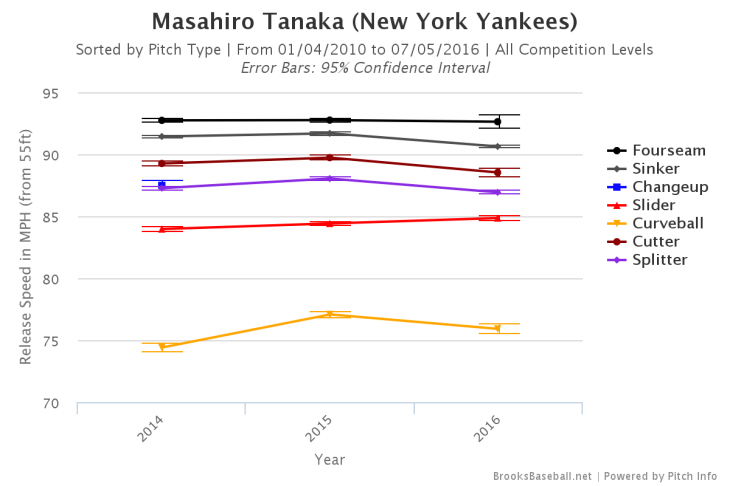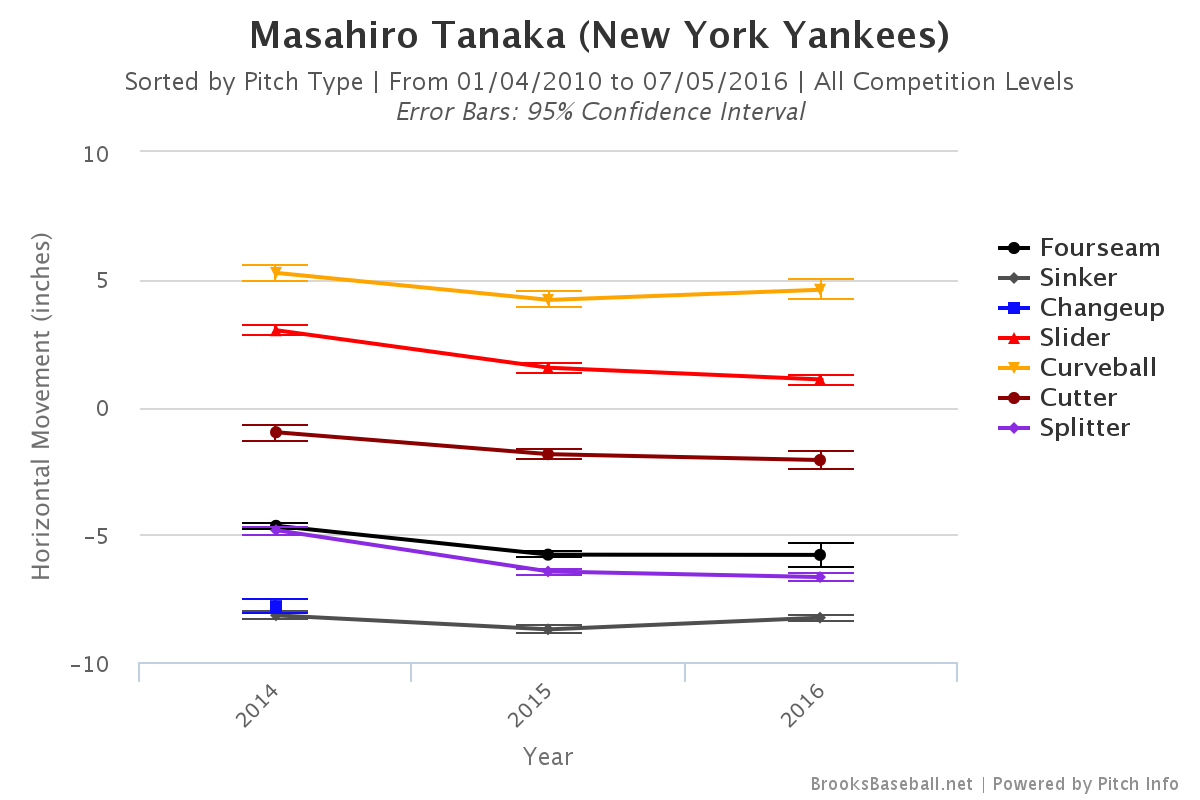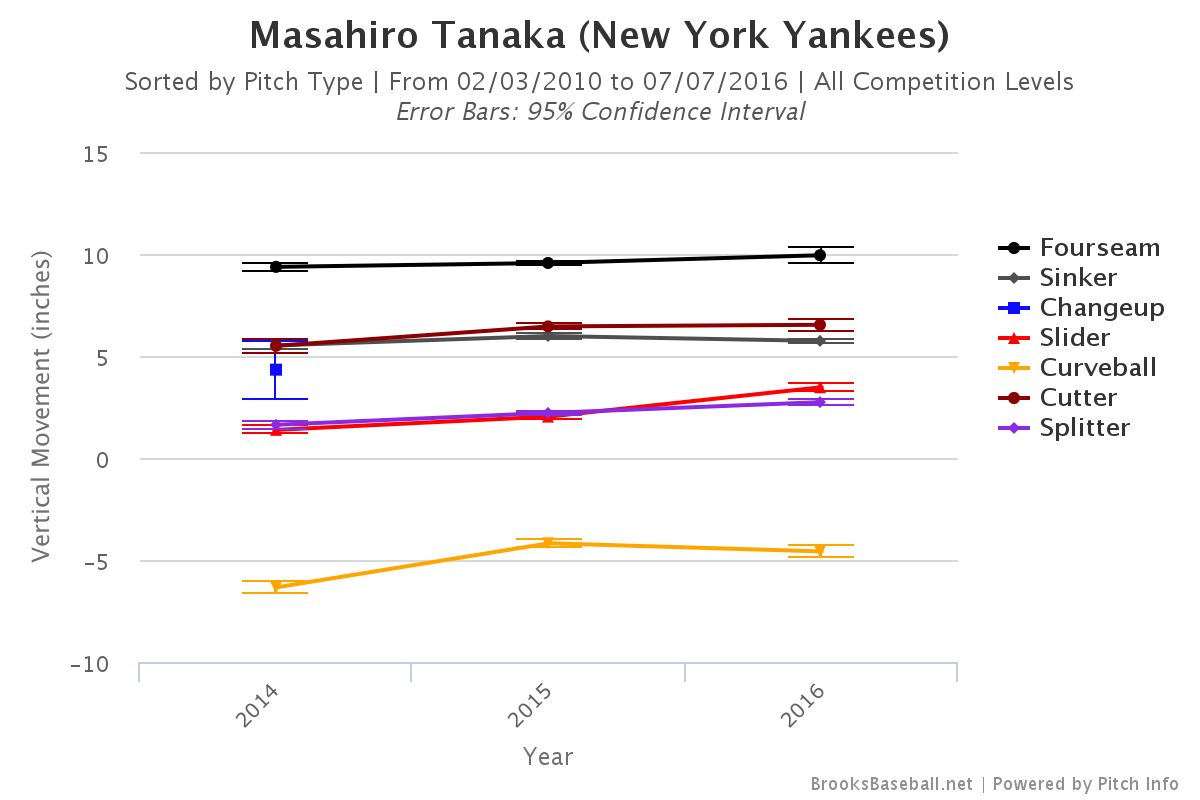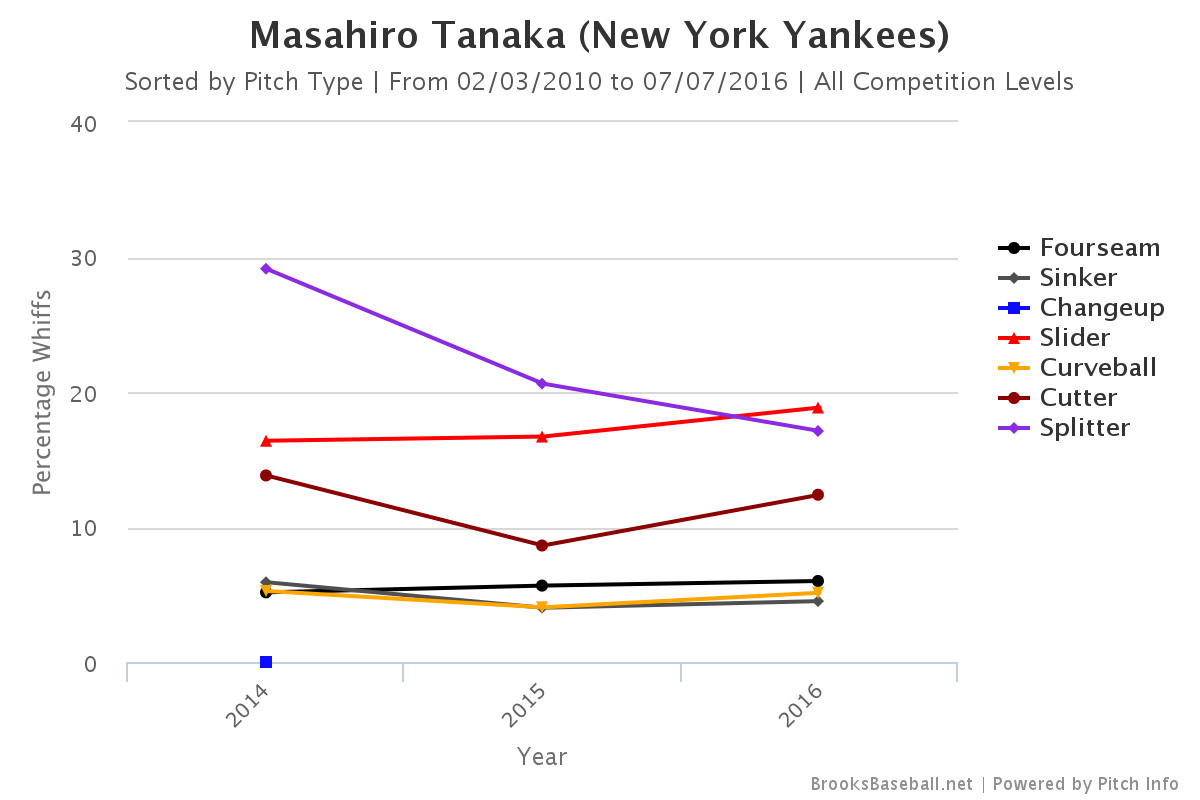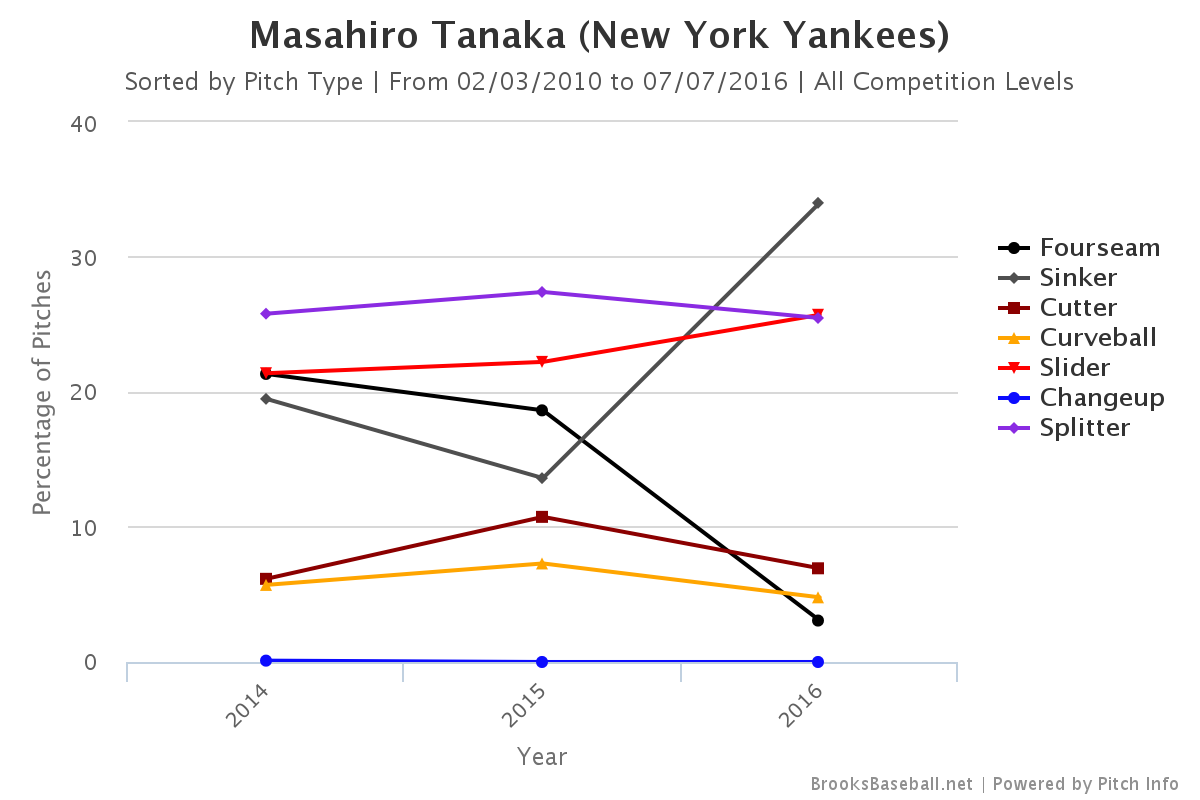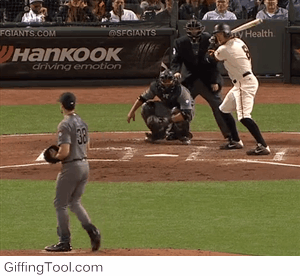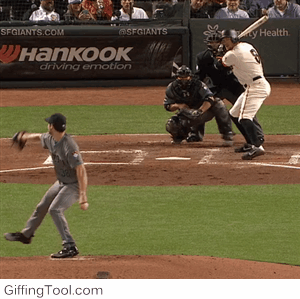Playing Probability: Drew Pomeranz and Anderson Espinoza
The Drew Pomeranz-Anderson Espinoza trade has plenty of unknowns. With Pomeranz in the midst of a breakout season and blowing by his previous innings totals and Espinoza at the age when you normally would be graduating high school it is hard to know what to expect. Will Pomeranz continue to dominate or will he return to his previous self where he was either injured or mediocre? Will Espinoza blossom into the pitcher everyone sees when they watch his stuff, or will he fail to get his command under control and turn into the pitcher that his 4+ ERA in Single-A might seem to predict? To evaluate a trade like this you would have to do a lot of guesswork on the futures of these players. So instead of digging into the details it can be best to zoom out, and play the probabilities.
Predicting the futures of prospects is one of the most difficult tasks. Not only do you have to deal with the small samples of short minor-league seasons, but you have to project how those statistics will translate one, two or even three levels above their current competition. Additionally, you have to predict how the player will grow and mature as he enters his prime years. While some try to discover the answers to this question on an individual scale, it can be more effective to embrace the randomness present in each individual human being and create an average performance level for similar groups of players. To do this I tried to think of ways to quantify what makes Espinoza such a noteworthy prospect.
First, I thought that maybe the combination of age and strikeout rate that Espinoza has produced at Single-A Greenville this year might stand out and place him in a small group of notable players. A quick look at even his same team however seemed to prove this hypothesis wrong, as his teammate Roniel Raudes has almost identical statistics to Espinoza this year and is the same age. Raudes however is ranked 24th in Baseball America’s Red Sox preseason rankings, demonstrating that Espinoza’s stats this year are not anything incredibly special by themselves, even when accounting for age.
Next I examined how starters who have debuted for at least 50 innings in a year by age 21 have fared in the major leagues, since Espinoza is predicted to arrive in either his age 20 or 21 season. There are 44 pitchers that meet these qualifications and debuted between 1990 and 2005, some of which are big names (such as Hernandez, Sabathia, Greinke and Kerry Wood) while others not so much. In the time before they were scheduled to reach free agency, these players accumulated on average a total of roughly 8.2 wins above replacement of production over that span. There are some problems with this calculation, however. For one, almost a third of starters debut by age 21, so it is not terribly extraordinary. For every Felix Hernandez in this group there in a Rich Hunter who had one good minor-league season, which prompted a promotion to the big leagues. In his case, his career lasted only that one season. There are also pitchers such as Bud Smith in this group who were once top prospects but faltered in the big leagues. In his case he was once ranked first in the Cardinals’ system, a spot ahead of Albert Pujols, which can work as a friendly reminder that not all big name prospects pan out.
Another way of looking at Espinoza’s value is just to take his prospect ranking for what it is. Kevin Creagh and Steve DiMiceli have done research to try to put a trade value on prospects using Baseball America’s prospect rankings. The following table outlines their findings.
| Tier | Number of Players | Avg. WAR | Surplus Value |
| Pitchers #1-10 | 22 | 14.6 | $69.9M |
| Pitchers #11-25 | 43 | 8.3 | $39.0M |
| Pitchers #26-50 | 85 | 6.4 | $29.8M |
| Pitchers #51-75 | 104 | 3.7 | $16.5M |
| Pitchers #76-100 | 113 | 3.5 | $15.6M |
Analyzing data on Baseball America lists from 1994 to 2005, the two men created this table to calculate the average surplus value of players from each tier of the rankings. (Their process is fairly complicated, so it is worth it to take a look at their process here in an earlier version of the study). This can be a very simple yet effective way to evaluate prospects based on both their stats and scouting report (since both are used to create the rankings) while also eliminating as many individual biases as possible (of course the prospect rankings are subject to those same problems).
In Espinoza’s case, he was just recently ranked 15th on the Baseball America midseason top-100, a five-spot jump from his preseason rank (though six players ahead of him have now graduated to the big leagues). This ranking puts him in the second tier of pitchers on the BA rankings and in line to have an average surplus value of 39 million dollars with a projection of 8.3 wins. This is almost exactly the 8.2 wins calculated earlier, though found through a very different method. While these rankings are in no way perfect, it is about as close as you can get to putting a concrete value on Espinoza’s skills (especially since both methods seem to agree), so we will use the $39 million value as a benchmark to compare with Pomeranz.
Moving on to Pomeranz, it is important to find a way to factor in all the different scenarios. You might have multiple ideas about how to take into consideration both this year’s statistics and those of the past, to try to come up with some sort of middle ground. While this is the right idea, this method is going to rely on assumptions that are unlikely to be made completely accurately. Instead we can use projection systems are much better at doing these calculations for us. For Pomeranz, this is the best way to include all the information about the many aspects of his performance and boil it down to one number.
Based on the depth chart projection on FanGraphs (the average between ZiPS and Steamer weighted for projected playing time), Pomeranz is projected to be worth about 1.3 wins the rest of the way. This is considerably worse than he has been so far this year, though much better on a per-inning basis than previous years, and still a valuable player. Using this projection, you can also project out the final two years of his contract assuming that he will continue pitching up to the same standard, by just doing a little math.
With roughly 46% of the season remaining at the All-Star break, you can use his rest-of-season projection to estimate his value over a full season, which ends up being 2.8 wins. First, though, you must use the same process as in the prospect ranking analysis to discount future performance since production today is considered more valuable than years down the line. Multiplying the value of each subsequent season by 0.92 you can account for the future discount rate of 8% (used in the prospect evaluation). Performing this adjustment results in 2017 and 2018 being valued at 2.6 and 2.4 wins respectively for a total of 6.3 wins over the three years with the Red Sox. At eight million dollars per win this totals to be around $50.4 million worth of production.
Finally, we must account for surplus value by subtracting how much Pomeranz is projected to make in arbitration. This year he is only making $1.35 million, but that should see a substantial increase after an All-Star season. I have little experience projecting arbitration but it seems reasonable that he would see his contract jump up to around $6 million in 2017 and see a more modest improvement up to around $10 million after a decent but somewhat less valuable season. These estimates would total to around $17 million going to Pomeranz from the Red Sox in the three years, and subtracting this from the $50.4 million, you end up with around $33 million in surplus value.
In the end these surplus values are very similar. Espinoza’s value comes in a little higher at $39 million compared to Pomeranz at $33 million, but the $6 million gap is nothing the Red Sox would have to lose sleep over. In reality though that gap is just the gap in average outcomes for both players and it is more likely to be much more lopsided toward one side or the other. While this seems to show that the Padres are getting a slightly better deal, you can easily rationalize this trade for the Red Sox by saying that wins today matter more now for the Red Sox than for the average team since they are in the midst of a tight wild card and division race where they are favored over the division leader in the playoff odds on both FanGraphs and Baseball Prospectus. That way of looking at it does make it much more appealing for Boston. It was a trade that they had to make given their situation. Not a great trade, not a bad trade, but an adequate trade that could turn out either way.
The real takeaway from all this however is on San Diego’s side of the deal. For them it wasn’t just an adequate deal, and it wasn’t even just a good deal. It was a great deal! For them, the pushing of wins down the road is a net gain for them as opposed to a net loss as it is for the Red Sox. They pushed Pomeranz’s average outcome of 6.3 wins (which was being wasted on an noncompetitive team) down the road to a time when they may be competitive and wins will matter much more. Not only that, but they also increased the projected output to 8.3 wins. While it is possible that Espinoza could flop and be a major bust, that is all part of the math that works in the Padres’ favor. For every underwhelming Espinoza, there is a great Espinoza; one that was acquired in exchange for a player that had little value to the club at this point in time and someone the team will get to watch for years to come.


